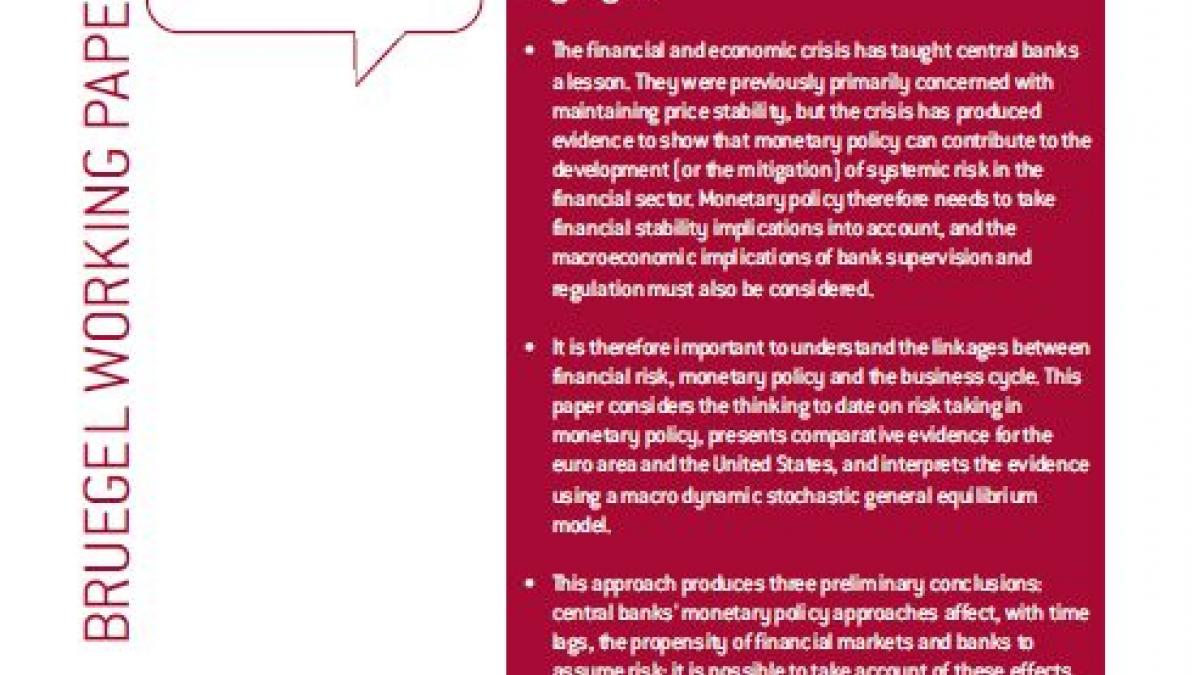Monetary Policy and Risk Taking

In this paper Bruegel Visiting Scholar Ignazio Angeloni (European Central Bank), Ester Faia (Goethe University Frankfurt, Kiel IfW and CEPREMAP) and Marco Lo Duca (European Central Bank) examine the links between monetary policy, financial risk and the business cycle, combining data evidence and a new DSGE model with banks. The model includes banks (modeled as in Diamond and Rajan, JF 2000 and JPE 2001) and a financial accelerator (Bernanke et al., 1999 Handbook). A monetary expansion increases the propensity of banks to assume risks. In turn, financial risks affect economic activity and prices. This "risk-taking" channel of monetary transmission, absent in pure financial accelerator models, operates via the leverage decisions of banks. The model results match certain features of the data, as emerged in recent panel data studies and in our own time series estimates for the US and the euro area.